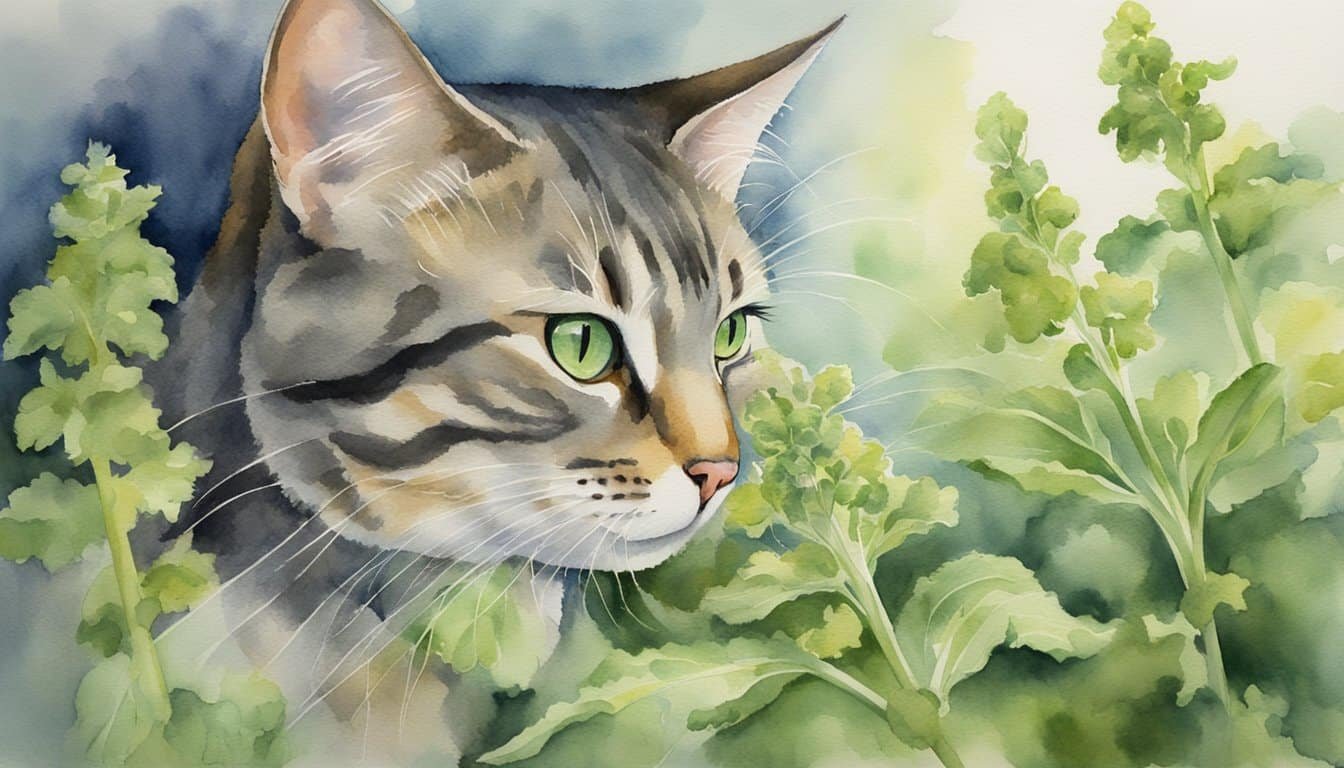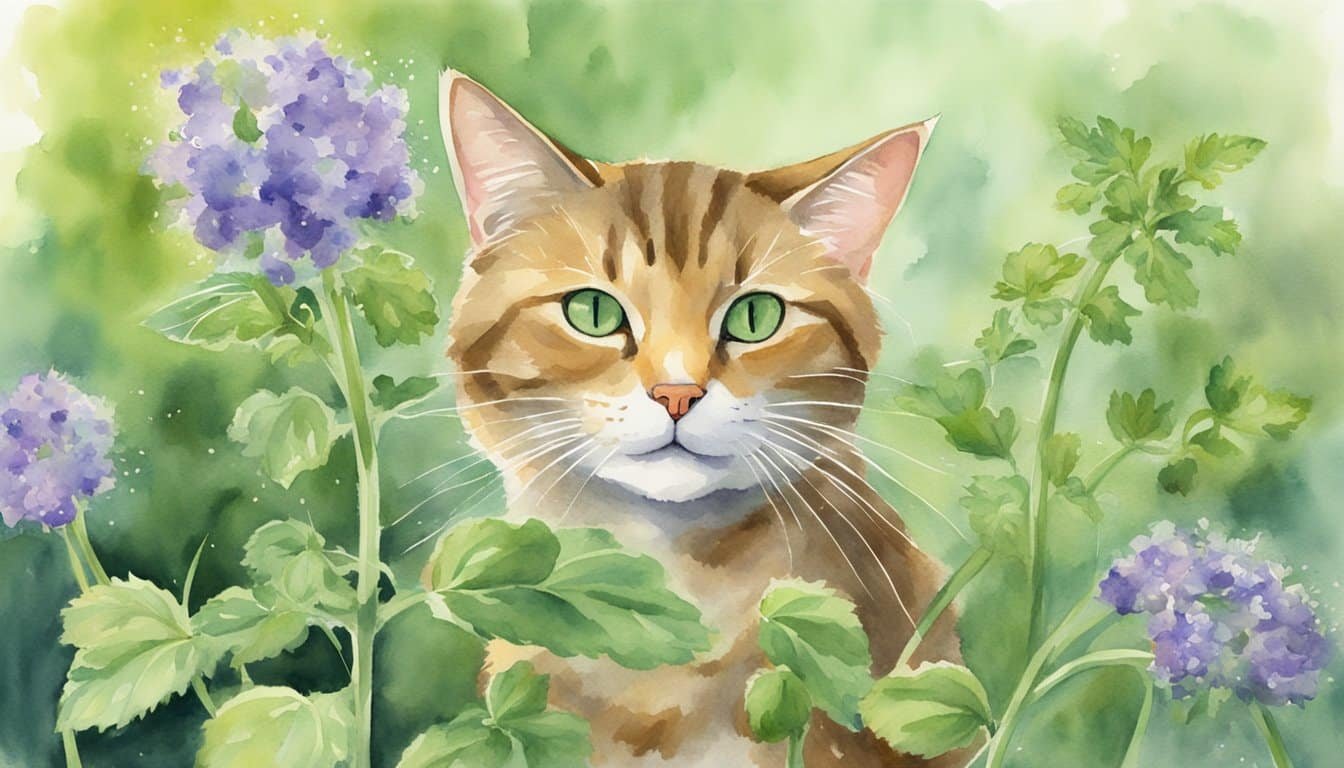Understanding Catnip and Its Effects on Cats
Catnip, or Nepeta cataria, is a member of the mint family that’s well-known for its effects on cats. This perennial herb originally from Europe, Asia, and Africa, is now widespread in North America and has become synonymous with feline playfulness. The primary component in catnip that triggers a reaction in cats is nepetalactone, an essential oil found in the leaves and stems.
When a cat encounters catnip, they may exhibit a range of behaviors, from rubbing and rolling to jumping and playing. Some cats might even chew or eat the fresh catnip. These reactions are reminiscent of euphoric states and are thought to mimic feline pheromones, causing a sort of “natural high.” Cats may experience a sedative effect after the initial excitement wears off.
Interestingly, not all cats are affected by catnip; sensitivity to it is hereditary, with an estimate that around 50 to 70 percent of domestic cats respond to this plant. The reaction is mediated by the olfactory system, where nepetalactone binds to protein receptors in the nasal tissue, stimulating sensory neurons that lead to the olfactory bulb and then to various brain regions like the amygdala and hypothalamus.
While catnip is often found in cat toys and sprays, it’s a safe herb that can also be used to relieve stress or anxiety in cats. However, it’s important to note that too much catnip can lead to mild digestive upsets, causing vomiting or diarrhea in some feline friends. Consulting a veterinarian is wise if unsure about the appropriate use of catnip for a pet.
The use of alternative plants like silver vine or Tatarian honeysuckle can also elicit a similar, although not identical, response in cats who may not be interested in catnip. Some studies suggest these alternatives contain different volatile oils that can also be attractive to our feline companions.
In summary, catnip’s allure for cats lies in its ability to invoke a range of behaviors from euphoric engagement to relaxation, and while most cats enjoy this herb, the effects will vary due to genetic factors. Whether fresh, dried, or in a catnip-filled toy, this mesmerizing plant continues to fascinate and entertain cats and their human observers alike.
The Science Behind Catnip

Catnip, scientifically known as Nepeta cataria, is a perennial herb that is famous for its unique effect on cats. The plant’s allure lies in a compound called nepetalactone, found in the leaves and stems of the catnip plant. When cats sniff nepetalactone, it binds to their olfactory receptors, which triggers a response similar to that of pheromones.
Sensory neurons in the feline brain are stimulated by exposure to nepetalactone, often resulting in a variety of typical reactions such as rolling, chin and cheek rubbing, and vocalizations. These responses are believed to be hereditary, as not all cats are affected by catnip; sensitivity to it is a genetic trait.
Catnip isn’t the only plant that contains compounds that trigger a response in cats. Both Silver vine and Tatarian honeysuckle possess similar properties, although they contain different active compounds. Silver vine, for instance, is rich in nepetalactone oil, which is akin to the volatile oil found in catnip.
Here’s an interesting fact: while humans can’t detect these oils in the same way cats do, the plant has been historically used by humans for its mild sedative properties.
For the felines that do respond to catnip, their playful behaviors are not just cute but also serve as voluntary exercises, and they are entirely safe. The catnip reaction is a temporary state and typically lasts from 5 to 30 minutes, after which the cat becomes temporarily immune to the effects for a period of time.
For interested readers, more information on the mosquito repellent properties of catnip can be found in this study on TRPA1, and further insights into genetics and catnip response can be observed in a study on the heritability and characteristics of catnip response.
Alternative Uses and Safety Concerns

Catnip, a member of the mint family, isn’t just for feline amusement. Humans have found several alternative uses for this herb. As a natural sedative, catnip has a history in alternative medicine for treating ailments like insomnia, cramps, and indigestion. Frequent sipping of catnip tea might offer a gentle reprieve for those dealing with stress or sleepless nights.
In the garden, catnip can act as a natural pest deterrent. Its volatile oils, particularly nepetalactone, are found unappealing to insects like aphids and can be a humane approach to maintaining a healthy garden.
As for safety, while catnip is generally considered safe for both cats and humans, it’s not wholly without concerns. Ingesting large quantities could potentially lead to mild gastrointestinal symptoms, such as diarrhea or vomiting in both humans and pets. Similarly, exposure to concentrated catnip oil should be monitored, as the potency of the oil might be overwhelming.
- Catnip toys provide a wealth of entertainment for cats, but always check that there are no small, detachable parts that might cause choking.
- When using catnip spray, ensure that it’s used sparingly, to maintain your cat’s interest.
Storing catnip is just as important; it should be kept in an airtight container to retain its potency, and it must be kept out of reach of cats when not in use.
Despite its various applications, always consult a veterinarian before introducing any new item or supplement to your pet’s environment or diet, especially to ensure safe and effective use. Some cats, particularly kittens under the age of sexual maturity, may not react to catnip, and for others, it may induce overly enthusiastic behavioral changes.
For those with a green thumb, explore incorporating catnip’s relative, the Tatarian honeysuckle or silver vine, both popular in Asia, as an alternative to stimulate feline euphoria. Always ensure that any plant life introduced to your household is non-toxic and safe for all inhabitants.
Interested in learning more about the effects of catnip and how to safely incorporate it into your furry friend’s life? Consider reading about catnip’s applications and safety for more in-depth information.

